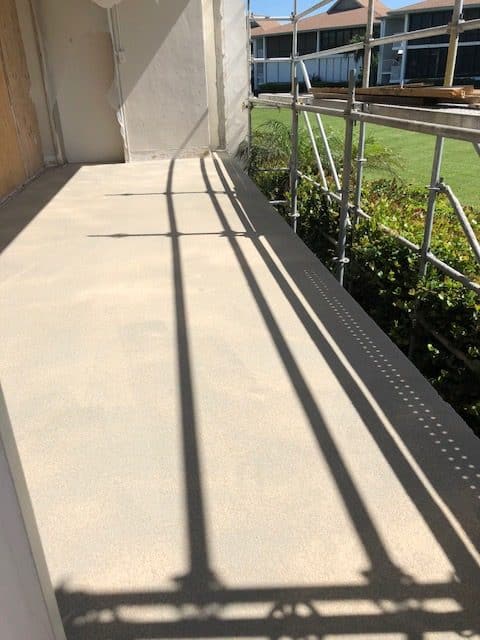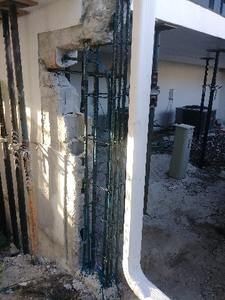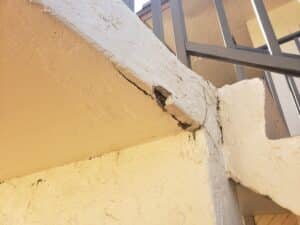In the ever-evolving landscape of property maintenance, concrete and stucco restoration stands as a pivotal element in preserving the aesthetic appeal and structural integrity of condo-HOA and commercial properties. This comprehensive guide delves into the intricacies of concrete and stucco restoration, providing valuable insights and practical solutions for property owners and managers alike.
Concrete and stucco, while durable materials, are not immune to the ravages of time, weather, and environmental factors. As these surfaces deteriorate, they can detract from a property’s overall appearance, potentially leading to decreased curb appeal and reduced property value.
Whether you’re a seasoned property professional or a homeowner seeking to enhance the longevity of your investment, this guide will serve as an indispensable resource. Join us on this journey as we uncover the secrets to achieving flawless concrete and stucco surfaces that exude timeless beauty and resilience.
Types of Concrete and Stucco Damage
In order to effectively address and resolve damage issues, it is crucial to first understand the various forms of damage that can affect concrete and stucco exteriors. Some of the common types of damage include:
1. Cracks: Both large and small cracks can form in concrete and stucco surfaces due to factors such as shrinkage, thermal expansion, or external pressure. Unaddressed cracking can escalate and potentially contribute to structural issues.
2. Spalling: Spalling is the process of concrete or stucco chipping, flaking, or breaking away from the surface, often caused by freeze-thaw cycles or corrosion of reinforcement bars within the concrete.
3. Delamination: This occurs when layers of concrete or stucco separate from the main structure, potentially owing to poor bonding during the application process or damages caused by moisture.
4. Moisture Intrusion: Excessive water penetration can lead to significant damage to concrete and stucco surfaces, including the formation of efflorescence, mold, and mildew.
Restoration Techniques
Depending on the type and extent of damage, there are various restoration techniques that can be employed to restore the appearance and functionality of concrete and stucco exteriors. Some effective methods include:
1. Patching: Cracks and voids can be filled using appropriate patching materials, which are carefully selected based on the specific damage and surface type. Proper surface preparation and application techniques are critical to ensuring long-lasting results.
2. Re-coating: In some instances, applying a fresh layer of stucco or specialized coating can greatly improve the appearance of damaged surfaces, while also providing additional protection against future deterioration.
3. Sealants: To prevent moisture intrusion and subsequent damage, high-quality sealants can be applied to concrete and stucco surfaces, creating a durable barrier that protects against water penetration and weathering.
4. Crack Injection: For structural cracks, epoxy crack injections can be used to create a strong bond within the concrete, effectively restoring its integrity and load-bearing capacity.
Prevention and Maintenance
To prolong the life of your concrete and stucco exteriors and minimize potential damage, consider implementing proactive maintenance strategies, such as:
1. Regular Inspections: Schedule periodic inspections of your property’s concrete and stucco surfaces to identify signs of damage early on, allowing for prompt remediation before issues escalate.
2. Timely Repairs: Address any identified issues swiftly to mitigate the possibility of further damage and reduce the need for more extensive restoration work in the future.
3. Moisture Management: Ensure proper drainage and waterproofing measures are in place to prevent moisture intrusion, which is a leading cause of concrete and stucco deterioration.
4. Protective Coatings: Applying specialized coatings to concrete and stucco surfaces can not only enhance their appearance but also provide added protection against weathering, moisture, and airborne pollutants.
Hiring the Right Contractor
Choosing a qualified and experienced contractor for concrete and stucco restoration projects is essential to ensuring successful, efficient, and high-quality outcomes. Here are some key factors to consider when selecting a contractor:
1. Experience: Seek a contractor with a solid track record and proven expertise in the field of concrete and stucco restoration for condo-HOA and commercial properties.
2. Certification and Insurance: It is imperative to select a certified and insured contractor to guarantee proper work practices and protection in the event of complications during the project.
3. Reviews and Referrals: Check references and read reviews from past clients to gain insights into the contractor’s performance and reliability.
4. Communication: A professional contractor should communicate openly and effectively, making themselves available to address questions or concerns throughout the restoration project.
Enhancing Curb Appeal: Concrete and Stucco Restoration for Condo-HOA and Commercial Properties
Concrete and stucco restoration projects require a deep understanding of the various types of damage, effective restoration techniques, and the essential steps involved in executing a successful project. By recognizing the importance of prevention and maintenance, as well as selecting a qualified contractor, condo-HOA and commercial property managers can confidently and efficiently navigate the complexities of concrete and stucco restoration projects.
For expert guidance and assistance in concrete and stucco restoration for condo-HOA and commercial properties, feel free to contact our team at McLeod’s Contracting Solutions. With our extensive experience and dedication to excellence, we are eager to help bring your vision to life while adhering to the highest industry standards.







